Organic ways in the garden & fav. organic products & healthy recipes
strawchicago z5
6 years ago
last modified: 6 years ago
Featured Answer
Sort by:Oldest
Comments (47)
Related Discussions
Old-time gardening = organic gardening?
Comments (23)To address paulns original propostion, I don't think it's a question that has a definitive answer without clarification.....what is "old-time gardening"? How far back does one go? And there are MANY definitions of organic gardening depending on one's philosophy, so which one are we going to agree to use? A lot of the previous comments are valid in a generalized form. The use of manufactured synthetic or chemically derived fertilizers has a pretty recent history when compared to how long man has been farming or growing crops for food. They are really only a by-product of the Industrial Revolution and the "hundreds of years" can actually be reduced to about 200, with the predominance of these fertilizers being widely accepted and used immediately after WWII, when they became cheaply and widely available, as greenwood85 notes. Same with synthetic, manufacture pesticides. And their introduction to the farming or gardening scene was considered at that time to be an enormous boon - a fast-acting, lightweight, easy to apply and easily accessible material that improved and increased harvests. Naturally - without the greater understanding we have now of soil science and the health implications of chemical residues and these products effects on pollution and ecology - they were widely accepted and utilized. It would be pretty hard to go back 50 or 60 years and not find a gardener or farmer that didn't use some form of manufactured fertilizer or pesticide. But even given these considerations, a good many of those gardeners/farmers from previous generations still incorporated what might be best termed "natural gardening" practices - composting, using animal manures, companion plantings, rotational cropping, home remedies for insect and disease controls - along with the manufactured products that at the time seemed like such a great improvement on what they had been doing. And affluence and location played a role as well - poorer farmers in more remote locations tended to use more what they had on hand - the natural methods and products rather than the newer, costly and more difficult to obtain manufactured ones. So I believe it is difficult to make a direct correlation between "old time gardening" and the organic or natural way unless you are going back more than just a 100 years or so....See MoreOrganic foods - healthy and delicious
Comments (9)There are no GMO tomatoes on the market. 100% of tomatoes you'll buy are 100% not GMO spiced with anything...especially fish DNA. The whole "fish in tomatoes" thing came from a product using flounder DNA that never even made it to market and hasn't been tested since the early 1990s. GMOs you're going to run into...grain corn, soy, canola oil, sugar beet sugars, some papaya, some sweet corn (growing segment), and some yellow summer squash. There's also alfalfa if you happen to care, but almost all of that is for animal consumption. GMOs in the pipeline that are actually likely to make it to the consumer market...citrus resistant to Huanglongbing...bananas resistant to fungal and virus disease..."red" pineapple (using citrus genes for color)..."golden" rice (probably will not be popular in the US)... NONE of these are being produced for herbicide or pesticide tolerance. There are a lot of GMO crops that will never make it past the research stage because farmers don't want/need them. There's 6 GMO tomatoes currently approved for growing in the US...none are grown, no seed is available except in supply banks, and none are being made available. There is no farmer or consumer interest in them. Also...here's a few places you're most likely to find GMO outside of crops (and there's more than this)...pretty much any multivitamin on the market (especially Vitamin C and Vitamin B2), some cheese making enzymes, some yeasts for bread/alcohol, and almost every insulin product on the market for diabetics. This post was edited by nc-crn on Sat, Jul 27, 13 at 19:24...See MoreOrganic essential oils for hom and garden/sylviatexas
Comments (5)I just noted that I wrote I wasnt putting a essential oil recipe in there for cleaning wooden floors, but there is one in there. Note though, that I havent ever used that recipe as I dont have wood floors, so I cant 100% say it wont take the shine off. If you want to try it, just do a test spot in a hidden area. Also, I dont know if I can give people my e-mail address if they want a printable version of this? Or my environmental group on myspace? Can I? Will someone please tell me so that I can put this info down if someone wants me to send them out a printable copy? Oh, and sorry it took me so long to get this up online sylviatexas! Thanks, sammie...See Moremiddle of the road gardener/ organic/ non organic
Comments (16)I also consider myself a middle of the road gardener. I try to take advantage of any organic matter that I have. But you can have too much of it as anything else. If you try to grow plants in 100% organic matter you will likely have problems such as draining or compaction even low fertility; because your plant swill not be able to use the elements It contains First the organisms in the soil must break it down into a soluble form the plant can take up in its roots. Most experienced gardeners have an understanding of the importance of the NPK and trace elements. They are important to the plants and also to the microbes and fungi, as well as us animals. I see people that use buzz words and terms such as organic vs inorganic, synthetic vs natural chemicals. Salts are bad for the environment. No till is better than tilling the soil. But the simple fact is the world is made of chemicals, including life. All chemicals are made from the basic elements, and by definition natural. If the elements in a chemical are the same it makes no difference to the plants if they are manmade or by any other organism. Salts are bad because they can build up in the soil.. That is possible but it is not a common occurrence. It happens primarily in deserts where there is not enough rainfall. I would offer the chemical definition of a salt. Chemistry. any of a class of compounds formed by the replacement of one or more hydrogen atoms of an acid with elements or groups, which are composed of anions and cations, and which usually ionize in solution; a product formed by the neutralization of an acid by a base. The key words for this topic are; which usually ionize in solution: that is dissolves in water. I would say that when most people see or hear the word salt they think of table salt Sodium chloride, which has little use in the garden. But there are many chemicals classed as salts. Plants can only take minerals from the soil when they are dissolved in water, and for the most part those chemicals are salts. No till is better than tilling the soil. It is true you can over till your soil if you pulverize it to the point it causes compaction. But the reason for tilling soil is to mix up the top mostly organic layer with the mineral nutrients in the lower area. And to incorporate air which is as important to the biomass of the soil as water. If you make your own compost you know how much faster things happen when you turn your compost pile. That is you are tilling your compost. Even no till lasagna gardens are tilled but it is primarily done by earth worms. Worms are great but they are much slower than a garden tiler or garden fork....See Morestrawchicago z5
6 years agolast modified: 6 years agostrawchicago z5
6 years agolast modified: 6 years agoVaporvac Z6-OhioRiverValley
6 years agolast modified: 6 years agostrawchicago z5 thanked Vaporvac Z6-OhioRiverValleystrawchicago z5
6 years agolast modified: 6 years agostrawchicago z5
6 years agolast modified: 6 years agostrawchicago z5
6 years agolast modified: 6 years agostrawchicago z5
6 years agolast modified: 6 years agostrawchicago z5
6 years agolast modified: 6 years agostrawchicago z5
6 years agolast modified: 6 years agostrawchicago z5
6 years agolast modified: 6 years agostrawchicago z5
6 years agolast modified: 6 years agostrawchicago z5
6 years agolast modified: 6 years agostrawchicago z5
6 years agolast modified: 6 years agostrawchicago z5
6 years agolast modified: 6 years agostrawchicago z5
6 years agolast modified: 6 years agostrawchicago z5
6 years agolast modified: 6 years agostrawchicago z5
6 years agolast modified: 6 years agostrawchicago z5
6 years agolast modified: 6 years agostrawchicago z5
6 years agolast modified: 6 years agostrawchicago z5
6 years agolast modified: 6 years agostrawchicago z5
6 years agolast modified: 6 years agostrawchicago z5
6 years agolast modified: 6 years agostrawchicago z5
6 years agolast modified: 6 years agoflowersaremusic z5 Eastern WA
6 years agolast modified: 6 years agostrawchicago z5 thanked flowersaremusic z5 Eastern WAstrawchicago z5
6 years agolast modified: 6 years agostrawchicago z5
6 years agolast modified: 6 years agostrawchicago z5
6 years agolast modified: 6 years agostrawchicago z5
6 years agolast modified: 6 years agostrawchicago z5
6 years agolast modified: 6 years agoVaporvac Z6-OhioRiverValley
4 years agostrawchicago z5
4 years agolast modified: 4 years agoGaia Organics
3 years agoVaporvac Z6-OhioRiverValley
3 years agostrawchicago z5
3 years agostrawchicago z5
3 years ago
Related Stories

GARDENING GUIDES10 Ways to Make Your Garden More Productive
Maximize your garden’s growth and output by building healthy soil, expanding growing space and collecting rainwater
Full Story
GARDENING GUIDES8 Sustainable, Organic Practices for Greener Lawn Care
Ditch the pesticides and fertilizers and adopt eco-friendly practices that will keep your lawn lush and healthy
Full Story
GARDENING GUIDESHow to Switch to an Organic Landscape Plan
Ditch the chemicals for a naturally beautiful lawn and garden, using living fertilizers and other nontoxic treatments
Full Story
FALL GARDENING5 Ways to Put Fall Leaves to Work in Your Garden
Improve your soil and yard the organic way with a valuable garden booster that grows on trees
Full Story
GARDENING GUIDESOrganic Matters: Thwart Insect Pests With Trap Crops
Add a few sacrificial plants to your garden to lure insects away from the harvest
Full Story
GARDENING GUIDES9 Ways to Be Water-Wise in the Edible Garden
Consider these tips to get a healthy backyard crop that uses less water
Full Story
EDIBLE GARDENSNatural Ways to Get Rid of Weeds in Your Garden
Use these techniques to help prevent the spread of weeds and to learn about your soil
Full Story
HEALTHY HOME12 Ways to Set Up Your Kitchen for Healthy Eating
Making smart food choices is easier when your kitchen is part of your support team
Full Story
GARDENING GUIDESNew Ways to Think About All That Mulch in the Garden
Before you go making a mountain out of a mulch hill, learn the facts about what your plants and soil really want
Full Story
GARDENING GUIDESWhat to Do This Fall to Build Healthy Garden Soil
Take advantage of the cool season to improve soil texture and replenish nutrients
Full Story


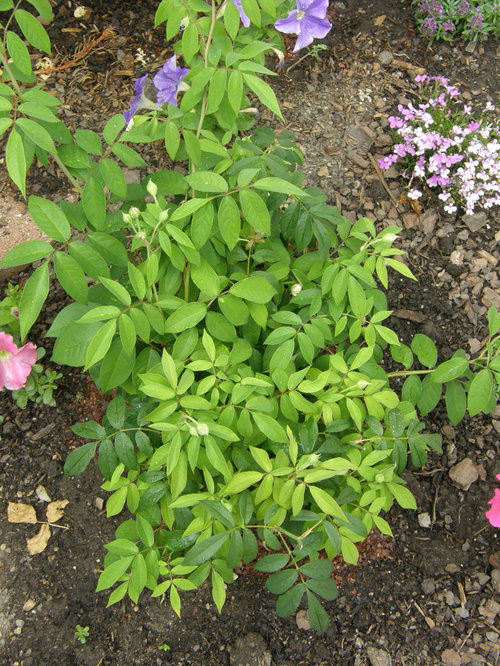




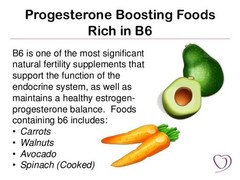
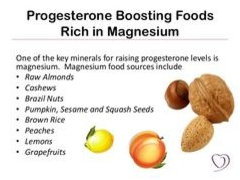

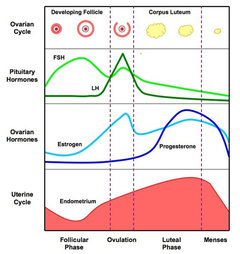
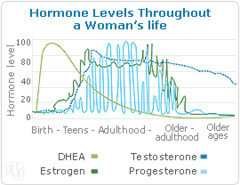











strawchicago z5Original Author